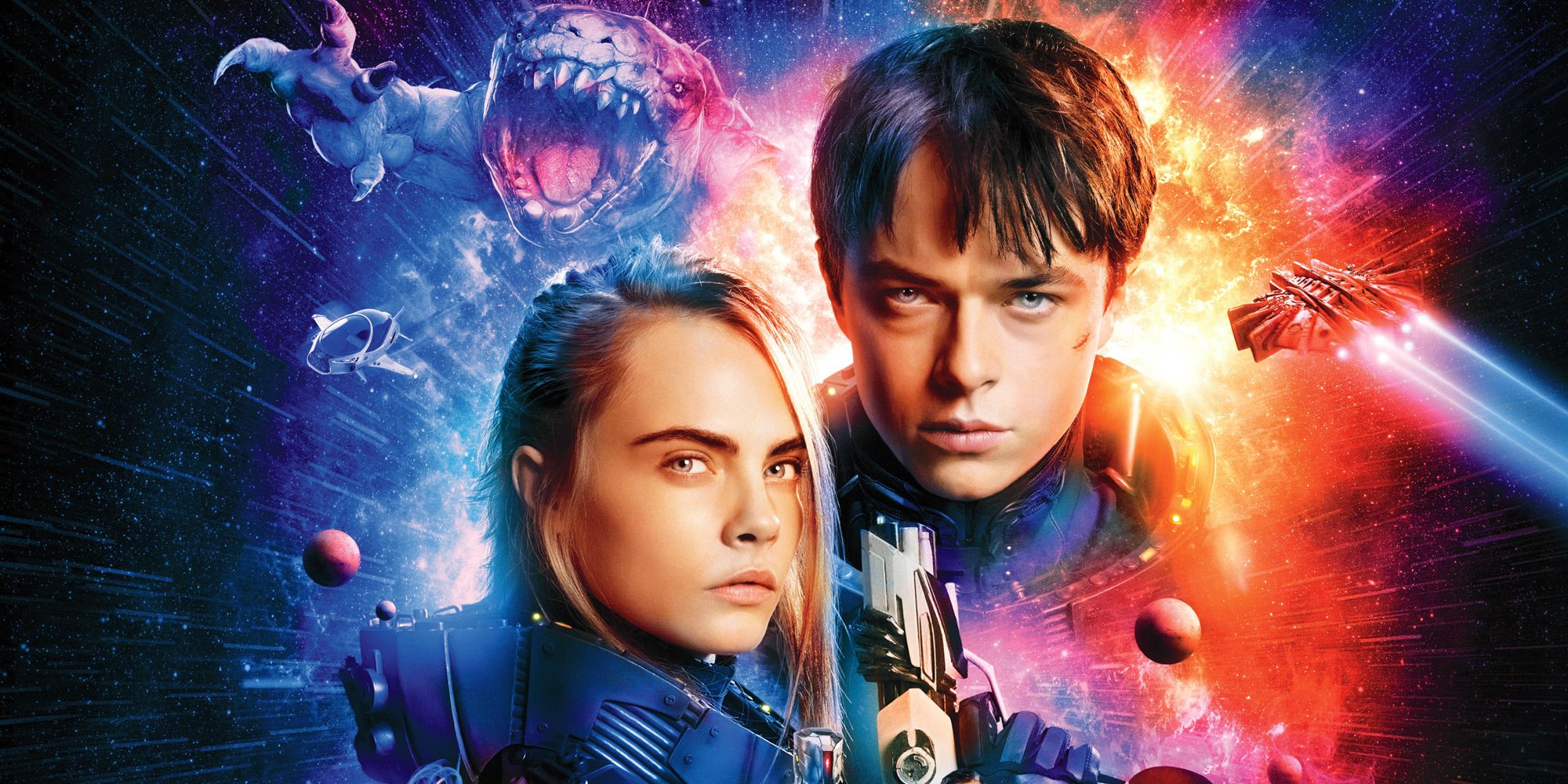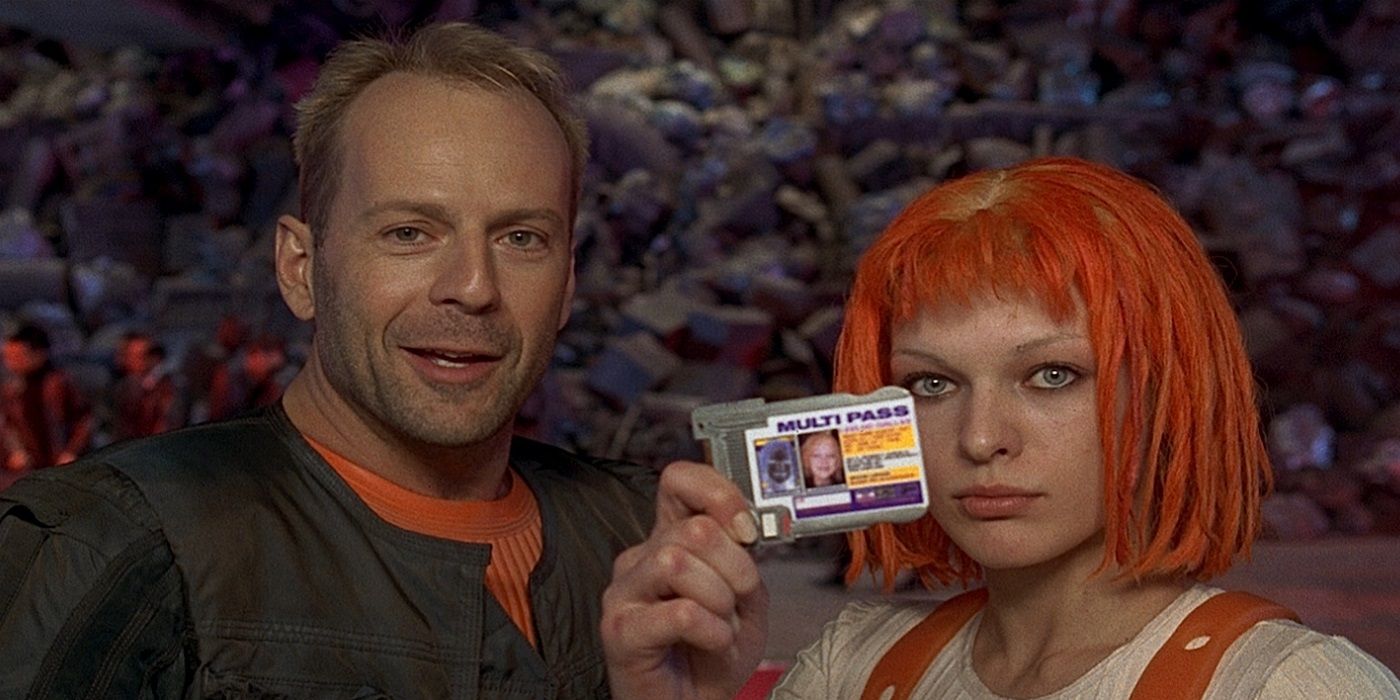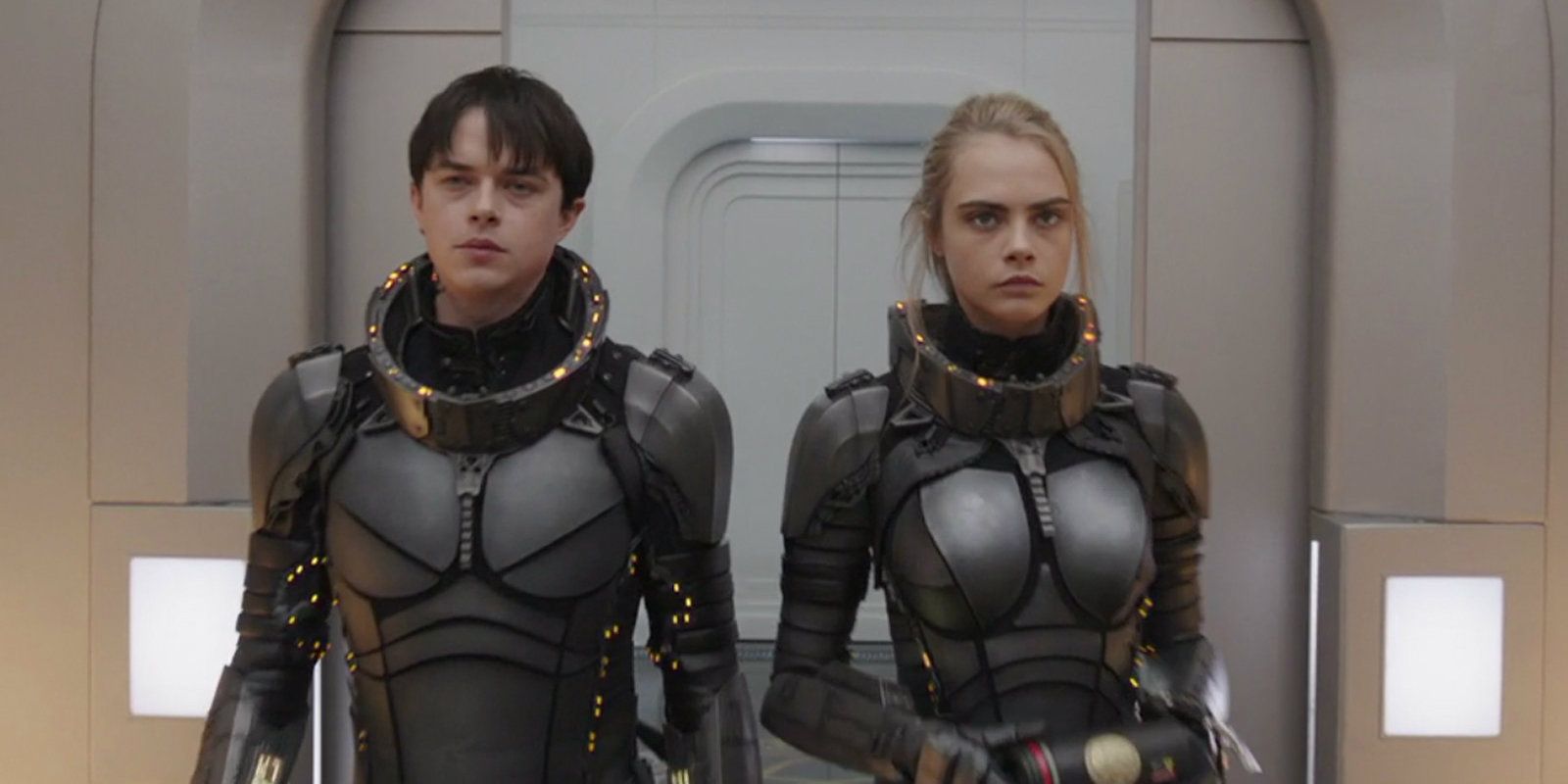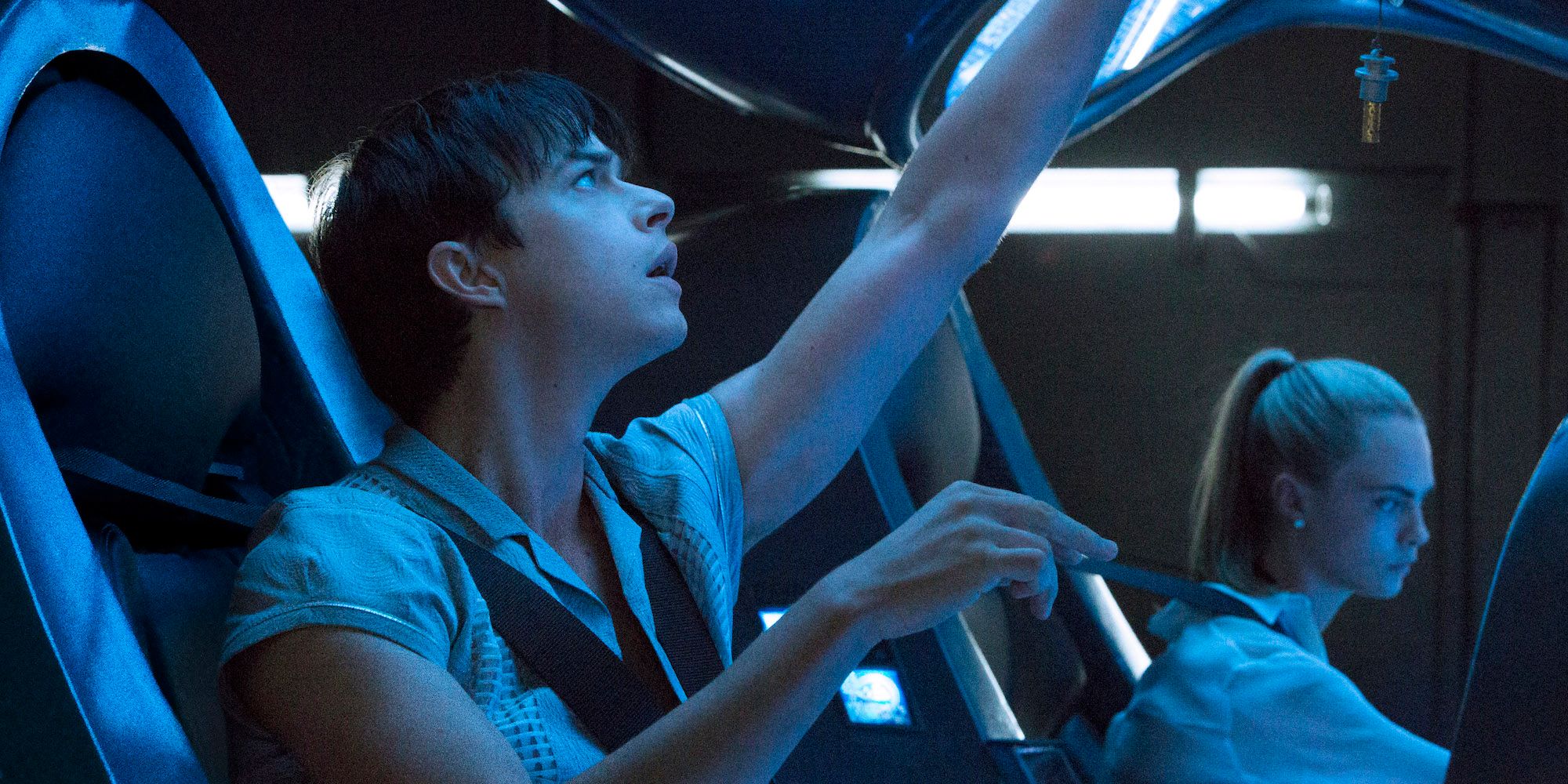Luc Besson is most known for directing classics like Leon: The Professional, Nikita, and The Fifth Element. His distinctive filmmaking style sets him apart from others, where the visuals usually take precedence and aim to wow and stun viewers. He was also arguably one of the few directors ahead of his time to put female characters at the forefront of his films. He combined all of these elements to bring to us his personal dream project, Valerian and the City of a Thousand Planets.
Screen Rant got a chance to talk to Luc Besson on press day where we discussed what Easter eggs we can find in Valerian, what are the differences between French filmmaking and American filmmaking styles, and what references he pulled inspiration from for characters in Valerian.
SR: The big market scene in Valerian is one of my favorite scenes in the film. It's just amazing to look at. How many different aliens and creatures did you have in that sequence and did you sneak any familiar characters that no one caught?
Luc Besson: Oh yeah. There’s a few. There are even characters from the 5th Element.
SR: I assuming I can pause that Blu-ray and I’d be able to find them?
Luc Besson: Yeah. In fact, the people from the special effects, from Weta, they told me that they put seven easter eggs, but I found 5, and there is 2 that I still don’t know where they put it.
SR: You can’t even find them.
Luc Besson: [Laughing] No. No. Because I’ll wait for the DVD. I don’t have the DVD.
SR: Which ones were you able to catch?
Luc Besson: I’m not telling you.
SR: So I have to find them.
Luc Besson: You have to find them. One is very easy. It’s the name of Korben Dallas written somewhere.
SR: I’ll be on the lookout for that. How closely did you work on the Blu-ray release of Valerian? Were there any scenes that you had to cut that you wished you kept in the film that ends up in the Blu-ray?
Luc Besson: None. I mean, it’s so expensive, each shot. There are more than 2,700 shots with special effects. There’s nothing you can put in the garbage. It’s impossible. When you have a shot, you set up the shot almost a year and a half before, so you have many, many, many, opportunities to say I don’t need this shot before you finish it. You know what I mean? There’s a couple of shots that I cut out that we never finished the editing and I decided I don’t need this shot, so I took it out, but it’s not finished. So now you can’t add it in because it’s not finished.
SR: This idea of doing this film has been in your head quite a while now. I just saw the features and it seemed like you kept it pretty light on set. Especially everybody’s last day. Is that something you brought to the set to keep you sane? Because this is a world you’ve lived in for awhile now, right?
Luc Besson: I have a very particular way of making the films with the crew and the cast. It’s very family oriented. Very! My image is that we are on the boat and we are crossing the Atlantic. We’re in the same boat, the rooms are very small. We sleep on the top of each other. We have for example, on each set, we have a few little things. There’s like 3 seats for Dane (Dehaan), Cara (Delevingne), and me.We even had like a little bed on the ground. We had some food like survivors, you know? We are like 50 feet from the camera. We are here. Just there. It was all day long like this and I love that. For me, it’s really a team. It’s like a sports team. Like going to the World Cup or something. We’re together and it’s very important to me. I remember a long time ago on 5th Element the assistant to Bruce Willis came and said, “Okay, I’m going to tell you how it works. We need a pre-call at 30 mins, then a pre-call at 15 mins, then a pre-call at 5 mins before he goes on set.” And I said, “I make a shot every 4 minutes. Are you kidding?” And he said, “What do you mean, you do a shot every 4 minutes?” Yeah! [Laughs] I do the shot and then I turn the camera around and I do another shot, so I can’t warn you 30 minutes before the shot. Because he’s used to like big American films where they wait for hours and things, which is never the case with me. So then I made a deal with Bruce and I said what about rather than working 5 days, you know, from like Monday through Friday, you work for 4 days per week? Monday, Tuesday, Wednesday, Thursday, but you sit on the box next to me by the camera and we shoot like crazy, and he said okay! Deal! So he was like on the entire set like 10 feet from the camera on a box and he was so happy. Because he preferred it shorter and tenser.
SR: Incredible. I had no idea.
Luc Besson: And if we say we finish at 7pm we always finish at 7pm. I never go overtime. Ever! It’s my respect for people. I ask a lot from them, but at 7pm they have a life, they have kids, and I let them do it.
SR: French filmmaking and American filmmaking are a lot different. Can you talk to me about the differences and how you implemented the French style of filmmaking for Valerian?
Luc Besson: I mean, Italians are different. The Chinese are different. So it’s normal. We have more roots in each country. Basically, the Americans are very well organized. Very well. It’s very impressive. The French are less organized. Everything is centric to the director in France so it’s really the wake up of the king and everyone’s around him and he says we’re gonna do this shot and everyone’s like [Gasp] the king said we’re going to do this shot. In U.S., the producer, the executive producer, the studio, the actors, a lot of people have power. It’s a big brainstorming about all these powers and it’s sometimes good and it’s sometimes bad. That’s the main difference. In France, it’s really focused on the director and nobody else. He’s really the emperor of the film. He takes all of the decision, with some abuse sometimes. The guy, you know, it normally supposed to be… when the guys were supposed to shoot at 9 and showed up at 10, and he’s wondering what he’s gonna do. So it’s not very efficient also. So there’s good and bad. The good thing is to take the great things from U.S. and the great things from France, and the great things from China, and the great things from Japan, you know?
SR: You just kind of merge it, right? You have always been ahead of the curve when it comes to spotlighting female action stars, whether it was Milla Jovovich in The 5th Element or Scarlett with Lucy and obviously, Laureline and have had success artistically and at the box office. Why has it taken so long for the trend to finally change?
Luc Besson: Or even Nikita. I don’t know really. I can’t answer that, in fact. I think that in Hollywood, most of the time when by accident something works everybody’s moving toward the thing that works. But it’s almost like an accident. Every time you have an accident it’s because the director fights almost for his life. I remember reading about George Lucas and of the studios said no to Star Wars. They said no to a film that brought billions of dollars to a studio. So it means that they’re not even able to see that a film can bring you billions? They said no, all of them, and there are so many examples of this. Films that have been turned around because they didn’t want to put more money and finally it’s a huge success. Like what was the film? The film in India. It got the Oscar and everything.
SR: Oh, Slumdog Millionaire?
Luc Besson: Yes! Slumdog. That film was finished. The studio doesn’t know how to release it. They sold the rights! And I said, guys, you can’t even see that the film is good? [Laugh] So the thing is little by little we take the power out of the creative people and I think it’s a mistake.The perfect things is the collaboration between the business and the creator and they have to be brothers. They have to be equal. That’s the only way. I respect you and you respect me and that’s the best film. If one or the other is taking the power, it’s wrong. It doesn't work.
SR: I did not know that Dennis Hopper was the first choice for Ethan Hawke’s character. I loved Ethan Hawke in this, but after it was revealed in the special features it could totally see it.
Luc Besson: It was a reference. It was more the reference to his performance in Apocalypse Now, you know, the character of Dennis Hopper. So that was a reference that we had for Ethan.
SR: When you had preconceived Valerian in your head was there any other references to people that you thought about for these characters? I mean, Valerian is taken from a source material.
Luc Besson: No, I think Ethan is probably the only one, in fact, because the rest are in the comic books and there’s 29 of them, so I have plenty of images to get inspired. But no, Ethan is probably the only one, because he’s not in the comic book, in fact.
SR: You just said there are 29 different Volumes of Valerian and you’ve written up to 4 scripts roughly. I heard a rumor that the next one could focus on Laurline’s character a little bit. Now that we have people consuming media digitally and it seems like the perfect story for serialization would you be opposed to doing it as a television show for like a digital age?
Luc Besson: No.
SR: Film strictly for the next 29…
Luc Besson: Yes. I’m sorry for that. [Laughs]
SR: No! This film was visually stunning. I mean that marketplace scene…
Luc Besson: Yeah, they work they did was amazing. It’s funny because I wrote the scene 15 years ago.
SR: Really? That scene isn’t included in the Valerian comic either, right?
Luc Besson: No.
SR: What brought that scene upon?
Luc Besson: Because I got this idea a long time ago when I went through an X-Ray machine. Suddenly, if I see myself in a mirror a see my nose and I see me, but on the X-Ray it’s just green and bones. So suddenly I have 2 identities. And if you watch, you know the camera where you just see the heat?
SR: Yeah.
Luc Besson: I will see red, red, and blue all around. If I never had the vision that we have today and my only way of knowing you is your spectrum, your heat spectrum, I would recognize you and I will say oh it’s Joe. Then I started to think about that. It’s funny to have two identities in two different worlds and that’s how it started to grow in my head.
SR: And now we’re kind of seeing that with V.R.
Luc Besson: Yup! That was way before.
SR: That was way before V.R. So you’re ahead of the game. You’re ahead of the curve of that too. I know you’re a big fan of The Airtight Garage by Moebius, have you ever considered adapting it into a motion picture?
Luc Besson: Oh, like 25 years ago they made this film called Heavy Metal. It was an animated film, and I wrote it because I wanted to do it but they didn’t take it.
SR: Any chance you could revive it?
Luc Besson: It’s a really weird story. I love it. It’s one of my favorites, but it’s very esoteric. You know that Heavy Metal appeared in France first and it was every week. Sorry, every month. On the first one, they were missing two pages. They had a gap and they (Heavy Metal) asked Moebius, give us something for 2 pages so he wrote the 2 pages of Airtight Garage without Heavy Metal knowing anything about what he’s going to say and everyone focused on the 2 page and said what’s next? The month after they loved it and said you have to do 2 more, so he did 2 more and went on for a year and a half like this, where he was going on with the story and like a cat, at the end he fell on his feet and I was wondering how can he fall on his feet, when at the beginning he didn’t even know where his story was going. So that’s why I love the thing, but it’s very difficult for a movie to follow a story like that, but if you have the opportunity read it. It’s amazing. Especially since now you know how the story was built. It’s amazing.
MORE: Valerian Sequel Still Possible Due To Fan Reaction
Valerian is available on Digital HD from Amazon Video and iTunes on November 7, 2017, and on Blu-Ray/ DVD November 21, 2017.




